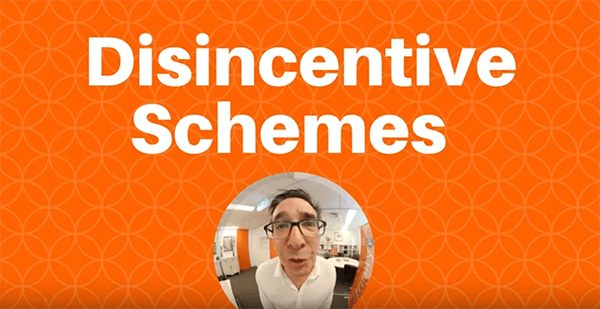The resource (FTE) based remuneration model is low risk for both agencies and advertisers, which is possibly why it is so popular. It’s readily understood that the marketer knows what they are paying and what resources they are supposedly getting for their project fees and retainers, and the agency is assured of recovering their salary costs and overheads and making an agreed margin on these costs.
Everything is calculated and determined, with minimal risk for both parties.
But here is the problem. Like most businesses, agencies need to demonstrate growth to their shareholders; this is a quarterly requirement for publicly listed companies. If I am going to increase my revenue and profit, it is through selling more resources for more money to my clients, who increasingly are looking for more cost-effective ways of having their advertising requirements delivered.
This is why value and performance-based remuneration models are increasingly being considered. But to make this work effectively, you need to understand the role that risk and reward play in the equation.
Rewards
Most in marketing and advertising are looking for the “upside” when considering performance incentives, bonuses and rewards. On the other hand we have the more pragmatic procurement team who are looking for ways to reduce the cost, and so you get reward models that are all stick and no carrot.
The typical model we have seen is where the agency sacrifices 10% of its profit for the chance to earn 10% to 15% back.
I often ask marketers if they would do this with their own salaries, and the answer is always an emphatic NO! So, I am baffled as to why anyone thought this was a winning idea.
For rewards to be motivators, they need to be substantial.
First, this percentage is often only calculated on the retainer, which is often slightly less than half of the total revenue the agency will take from the advertiser.
Second, in some cases, the bonus is less than the revenue the agency makes on a really good production project, and so is not a major incentive.
Third, if the criteria are set badly, the agency can usually, at best, make back what they would have been paid anyway, and yet they will have to work a whole lot harder to do it.
Fourth, quite often, no “upside” is offered, making the whole arrangement punitive only.
And lastly, the agency may decide that time is better spent on new business activity where extra efforts are more handsomely rewarded (with incremental business) than often unobtainable (and relatively small) incentives from existing clients. This is not the attitude clients want from their agencies.
In each case, where is the motivation for the agency to go above and beyond?
If you are going to enter into a reward model to drive performance, then it has to be worthwhile.
Risks
This is the next big sticking point: the risk associated with any reward model. It comes down to the criteria against which the agency will be evaluated.
| Criteria type | Example | Risk Profile |
| Criteria that the agency can directly control | Relationship | Low risk |
| Criteria the agency can influence | Media costs | Low – Medium risk |
| Criteria where the agency has little influence | Brand tracking | Medium risk |
| Criteria where the agency has no influence | Sales / Profit | High risk |
The less control or influence the agency has, the higher the perceived risk.
But in a complex system such as a marketplace, it is strange to consider risk as, in many ways, no one involved has control. When you consider that issues such as the economy, the weather, product supply, competitive activity, and distribution are often outside the control of the marketing team, let alone the agencies, it is strange to consider control. But for the agency, entering into a reward-based model has associated risks.
An additional risk for the agency comes from the advertiser being unable or unwilling to share the data the reward criteria are based on or provide regular updates on progress versus the targets; scoff if you must, but we see it more often than you think.
It is natural for the agency to want to minimise the risks and maximise the rewards. This is simply them reacting in a natural human way, which is not to want to risk what they already have, which is the current remuneration model.
Risk & Reward
When you bring these two together, balancing both the risk and the reward is important. As the agency’s risk increases, the agency’s reward should also increase. It is striking a balance that is important and both the agency and the advertiser need to be open and honest in what they value and what risks they are willing to take.
Because of this relationship of increasing risk being balanced by increasing reward, we find that the metrics used for the agency will move from agency relationship performance measures to brand and financial performance measures. The reason is that a financial improvement for the brand and the business must justify the increased reward.
Many will try to mitigate the increased risk by spreading measures across various risk profiles. This is a logical approach, but care must be taken that the rewards within that approach match the risks. Too often, the low-risk criteria end up with similar rewards to the high-risk ones, making them a much more desirable focus for the agency and one they will default to, especially if they can directly control or impact the results. Remember, what gets measured (or, in this case, rewarded) gets managed.
The role of trust
Because you are asking the agency to move from a low-risk proposition to a potentially high-risk model, it naturally requires a level of trust between each of the parties. In the past, many agencies have been burnt by the traditional procurement model described above, which was all risk and little reward for the agency as the primary reason for the implementation was to reduce the agency fee.
One way of building trust is to transition from a low-risk to a higher-risk model over time. That is to have a low-risk and low-reward model implemented initially and then, each year, increase the risk profile and the reward level for the agency.
This approach fits with the agency’s desire to have a mechanism for increasing their own financial performance, and with time, they can see how the risk and reward model works.
Some try to implement the model when selecting a new agency. This is definitely possible as a way to establish a new relationship based on rewarding performance. However, the risk factor is still a concern for agencies. Again, we would recommend tabling a model that commences with lower risk and lower reward model initially with a transparent view of increasing the agency risk profile and reward size over time, or better still, starting with base remuneration only, with a commitment to implementing the model in 6 to 12 months once a degree of trust has already been established, and some of the risks have been mitigated.
The danger of forcing the agency into accepting a high-risk model is that if the model delivers to their revenue expectations, it can significantly damage the relationship between the agency and the advertiser.
Getting the balance right
Often, the process requires an independent third party to get the balance right by:
- Creating a model that meets the advertiser’s performance needs and satisfies the agency’s risk comfort level.
- Acting as a voice of reason brings both parties to a common ground.
- Monitoring the metrics and ensuring the agency is held accountable and rewarded as necessary.
While we can facilitate the process and assist in developing an environment of trust, the one thing we cannot do is build the trust itself. This takes the two parties working together with open and honest communication, integrity and goodwill.
What are your thoughts? Please contact us as we’re keen to hear from marketers and agencies successfully implementing a PBR.
Or you can read more about our ‘Agency Commercial Evaluation Services’, including agency fee modelling, here.




